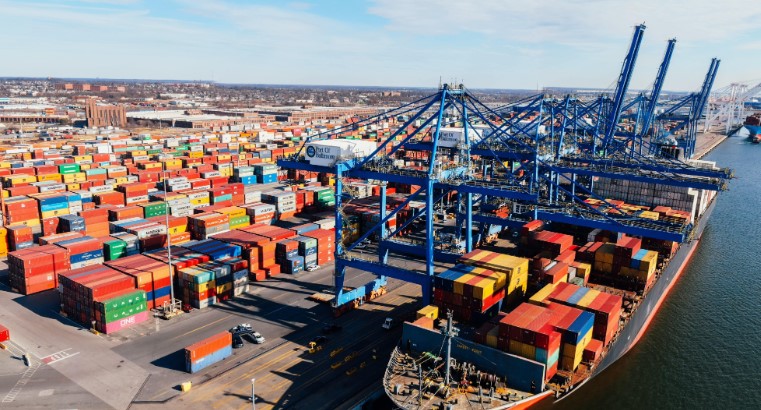
Role of Government policies in shaping and altering the course of business
- July 14, 2023
- 0
There are diverse perspectives regarding India’s economic prospects. Some people see great possibilities in it, while others feel that the government’s size is too large and policies are unclear.
The good news is that the investors who had invested significantly in China during its initial growth phase are now witnessing similar signs of potential in India, and they can increase their investments here. These investors are looking to reduce or limit new investments in China and are recognizing India’s capacity for substantial investments in emerging markets. The development of logistics infrastructure and digital transformations in India has also contributed to this trend.
Non-competitive regulation of the private sector, inadequate and unreliable infrastructure, limited access to capital, trade-related barriers, ineffective educational environment concerning skill development and employment, etc., have all had an impact. A significant portion of the population has been adversely affected by the electoral benefits that favor a large segment of the population.
With its economic strength, dynamism, favorable demographics, and improved productivity, India is in a good position. However, the expectation for this decade is to maintain an average annual growth rate of around six percent. Consumer demand is strong for expensive goods, but it is weak at the lower level.
Structural changes will be required for achieving high growth rates of eight percent or more. It will begin with policies that can provide an efficient and reliable foundation, ensure access to capital, and eliminate tax-related uncertainties. Improving productivity through infrastructure development everywhere enables more people to become capable.
To achieve the next level of productivity improvement, more profound changes will be necessary. This includes factors such as security at the level of law enforcement, meaningful education and skill development, significant changes and productivity enhancements in agriculture, and informed approaches towards sustainability and resilience.
The construction of new roads is progressing at a rapid pace. However, two major challenges have emerged despite heavy expenditure. Firstly, there are delays in project completion, and secondly, a more serious issue is the rapid deterioration of roads. Heavy rainfall exacerbates the problem, and the quality of construction and timely maintenance suffer as a result. Other countries, like India, that experience similar weather variations focus on better construction and maintenance of roads.
According to an expert with experience in both the United States and India, the entire issue comes down to adherence to standards. The need to adhere to standards exists in many other regions as well, and by implementing them, competitiveness can be enhanced.
Subject matter development, technical selection, and organizational support can enhance beneficial utilization. For example, subject matter expertise is required to bring about changes in agriculture, promote sustainable farming practices, and improve workplace skills.
We can progress rapidly only through the proper selection of government policies.
Shyam P.
सरकारी नीतियों के प्रभाव से बनते-बिगड़ते है
कारोबार वातावरण
भारत की आर्थिक संभावनाओं को लेकर बहुत अलग-अलग तरह के विचार हैं। कुछ लोगों को इसमें बहुत अधिक संभावनाएं नजर आती हैं तो कुछ अन्य को लगता है कि सरकार का आकार बहुत बड़ा है और नीतियां स्पष्ट नहीं हैं।
अच्छी खबर यह है कि जिन निवेशकों ने चीन की शुरुआती वृद्धि के दौर में वहां काफी पूंजी निवेश किया था उन्हें भारत में भी वैसे ही लक्षण दिख रहे हैं और वे यहां निवेश बढ़ा सकते हैं। ये निवेशक चीन में नए निवेश को कम करना या सीमित करना चाहते हैं और उभरते बाजारों में भारत में बड़े निवेश की क्षमता नजर आ रही है। भारत के लॉजिस्टिक्स निर्माण और डिजिटल बदलाव ने भी इसमें योगदान किया है।
गैर प्रतिस्पर्धी निजी क्षेत्र नियमन, अपर्याप्त और गैर भरोसेमंद अधोसंरचना, पूंजी तक सीमित पहुंच, शुल्क संबंधी बाधाओं, कौशल विकास और रोजगारपरकता को लेकर निष्प्रभावी शैक्षणिक माहौल आदि के कारण प्रभावित है। आबादी के बड़े हिस्से को चुनावी फायदों ने क्षति पहुंचाई है।
अपनी आर्थिक मजबूती, गतिशीलता, अनुकूल जनसांख्यिकी और बेहतर उत्पादकता के साथ भारत अच्छी स्थिति में है लेकिन फिर भी इस दशक में वृद्धि के औसतन छह फीसदी वार्षिक रहने की ही उम्मीद है। महंगी वस्तुओं के लिए उपभोक्ता मांग मजबूत है लेकिन निचले स्तर पर वह कमजोर है।
आठ फीसदी या उससे अधिक की उच्च वृद्धि के लिए ढांचागत बदलाव की जरूरत होगी। इसकी शुरुआत उन नीतियों से होगी जो किफायती और विश्वसनीय बुनियादी ढांचा दिला सकें, पूंजी तक पहुंच सुनिश्चित कर सकें और कर संबंधी आतंक को समाप्त कर सकें। हर जगह अधोसंरचना की मदद से उत्पादकता बढ़ाने से और अधिक लोग सक्षम होते हैं।
उत्पादकता में सुधार के अगले स्तर के लिए अधिक गहन बदलाव की आवश्यकता होगी। इसमें कानून व्यवस्था के स्तर पर सुरक्षा, सार्थक शिक्षा और कौशल विकास, खेती में गहन बदलाव और उत्पादकता और टिकाऊपन को लेकर सूचित रुख आदि शामिल हैं।
नई सड़कों का निर्माण बहुत तेज गति से हो रहा है। बहरहाल, भारी भरकम खर्च के बावजूद दो दिक्कतें सामने आईं। पहली, परियोजनाओं में देरी और दूसरा तथा अधिक गंभीर मसला है सड़कों का तेजी से खराब होना। भारी बारिश से जहां समस्या में इजाफा होता है वहीं निर्माण की गुणवत्ता और समय पर रखरखाव न होने के कारण भी सड़कों का स्तर बिगड़ता है। भारत जैसे ही मौसमी बदलाव वाले अन्य देश सड़कों का बेहतर निर्माण और रखरखाव करते हैं। अमेरिका और भारत दोनों देशों का अनुभव रखने वाले एक विशेषज्ञ कहते हैं कि पूरा मामला मानकों के पालन का है। मानकों का पालन करने की आवश्यकता कई अन्य इलाकों में भी है और इनकी मदद से और प्रतिस्पर्धी क्षमता में बदलाव किया जा सकता है।
विषयवस्तु का विकास, तकनीकी चयन और संगठन की सहायता से लाभदायक उपयोग को बढ़ाया जा सकता है। उदाहरण के लिए कृषि में बदलाव लाने और गहन खेती, कार्यस्थल के कौशल आदि में इजाफा करने के लिए विषयवस्तु की आवश्यकता होगी।
सरकारी नीतियों के सही चयन से ही हम तेज गति से आगे बढ़ सकते हैं।

































































